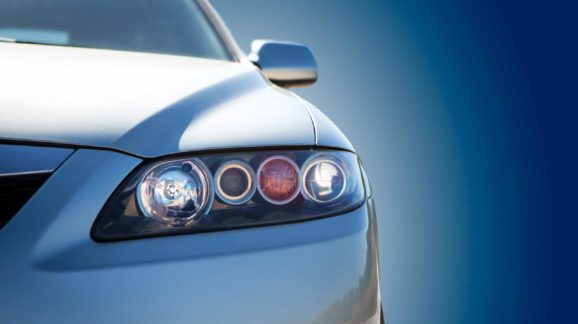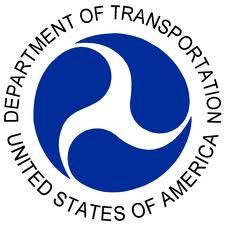Congress Must Help Modernize Outdated Auto Safety Regulations

 Most American drivers probably aren’t aware that the federal motor vehicle safety standards (FMVSSes) to which automakers must self-certify their vehicles generally rely on private industry standards written decades ago. In many cases, the engineers who write these private standards incorporated into FMVSSes have since updated them to reflect modern technologies and practices, but the old standards remain the law of the land as long as the National Highway Traffic Safety Administration (NHTSA) fails to update its FMVSS regulations. This is a serious regulatory failure, but one that Congress can address by directing NHTSA to prioritize regulatory modernization. To that end, I have written a short report detailing the problem and how Congress can fix it.
Most American drivers probably aren’t aware that the federal motor vehicle safety standards (FMVSSes) to which automakers must self-certify their vehicles generally rely on private industry standards written decades ago. In many cases, the engineers who write these private standards incorporated into FMVSSes have since updated them to reflect modern technologies and practices, but the old standards remain the law of the land as long as the National Highway Traffic Safety Administration (NHTSA) fails to update its FMVSS regulations. This is a serious regulatory failure, but one that Congress can address by directing NHTSA to prioritize regulatory modernization. To that end, I have written a short report detailing the problem and how Congress can fix it.
One prominent example of NHTSA’s failure to adopt the latest voluntary consensus standards (VCS), as the private industry standards are referred to in federal law, deals with headlamps governed by FMVSS 108 (49 C.F.R. § 571.108). The most significant headlamp VCSes incorporated in FMVSS 108 were published by the Society of Automobile Engineers in the 1960s. These standards presume discrete high- and low-beam headlamps. So, regardless of whether or not the switch is manual or automatic, the headlamps in your car must be capable of switching between higher and lower illumination settings.
In recent years, automakers have developed adaptive driving beam (ADB) headlamps. ADB headlamps eliminate the high- and low-beam distinction by using a new lamp array containing dozens of individual LED lights that switch on and off depending on the driving conditions. The LED bulbs are computer controlled to adjust illumination levels to provide maximum visibility while minimizing glare to preceding and oncoming vehicles, vehicles which are detected by the onboard camera. The result is that drivers at night can better avoid hitting pedestrians, animals, or other hazards—enjoying the benefits of high beams with the comfort (to other drivers) of low-beam illumination. This technology has been widely adopted in Europe and Japan during the last decade.
Unfortunately, as noted above, NHTSA’s FMVSS 108 relies on outdated VCSes, effectively prohibiting the use of this superior, safer headlamp technology. But this is just the tip of the obsolete regulatory iceberg at NHTSA, and one that is likely to get much worse if Congress doesn’t address it. If NHTSA cannot modernize its rules to reflect the latest technologies in headlamps, should we expect them to be ready for the self-driving revolution? Absolutely not.
NHTSA itself has research showing that up to 45 percent of its FMVSSes present certification problems for automated vehicles—meaning automated vehicle developers would either need to seek narrow, temporary exemptions or choose not to deploy their production vehicles in the U.S. While much attention has been given to the artificial intelligence, privacy, and cybersecurity challenges posed by automated vehicles, the most significant practical public policy issue is NHTSA’s failure to keep its safety regulations updated to conform to current VCSes. And if NHTSA fails to modernize its regulations to keep pace with far safer automobile technologies, we will be living in a strange world where auto safety regulations will be killing people by mandating less safe technologies. (Paging Sam Peltzman.)
In my report, I recommend that Congress amend NHTSA’s FMVSS enabling statute to provide an update trigger mechanism. Basically, it works like this: When a standards-setting organization publishes a revision of a standard incorporated in any FMVSSes, it shall then notify NHTSA of the revision. NHTSA then must either reject the standard on safety, legal, or other practicability grounds, and state those reasons, or it must adopt the standard and begin the rulemaking process to amend the relevant regulations. For minor and uncontroversial updates, NHTSA can utilize its direct final rulemaking procedure to forgo the time and expense of a full notice-and-comment rulemaking proceeding. The others would go through the normal rulemaking process.
This isn’t to say that Congress’s update trigger mechanism would be a silver bullet. Rulemakings to amend their regulations to conform to the latest VCSes will take years. But it does focus NHTSA’s attention and resources on its core function of administering the auto safety regulations, limiting the agency’s ability to engage in extraneous, discretionary activities and thereby providing additional congressional oversight.
The appeal of this proposal ought to be bipartisan. If you’re a Republican skeptical of government regulation, at the very least you should want regulations to do the least amount of harm. And if you’re a Democrat enamored by the idea of government regulation, at the very least you shouldn’t want real-world regulations to be so objectively stupid and backward.
Read the full report, Modernizing Federal Motor Vehicle Safety Standards.